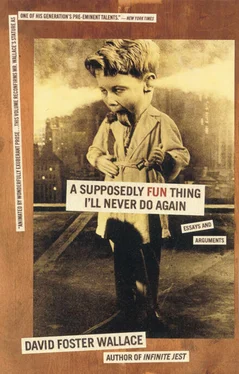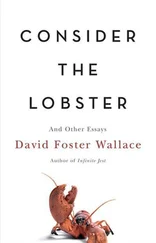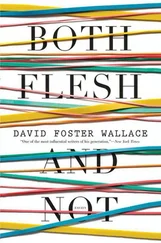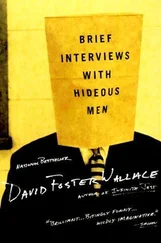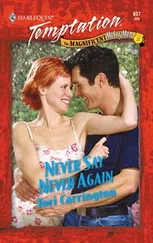That’s the good news.
The bad news is that, almost without exception, Image-Fiction doesn’t satisfy its own agenda. Instead, it most often degenerates into a kind of jeering, surfacey look “behind the scenes” of the very televisual front people already jeer at, a front they can already get behind the scenes of via Entertainment Tonight and Remote Control .
The reason why today’s Image-Fiction isn’t the rescue from a passive, addictive TV-psychology that it tries so hard to be is that most Image-Fiction writers render their material with the same tone of irony and self-consciousness that their ancestors, the literary insurgents of Beat and postmodernism, used so effectively to rebel against their own world and context. And the reason why this irreverent postmodern approach fails to help the new Imagists transfigure TV is simply that TV has beaten the new Imagists to the punch. The fact is that for at least ten years now, television has been ingeniously absorbing, homogenizing, and re-presenting the very same cynical postmodern aesthetic that was once the best alternative to the appeal of Low, over-easy, mass-marketed narrative. How TV’s done this is blackly fascinating to see.
A quick intermission contra paranoia. By saying that Image-Fiction aims to “rescue” us from TV, I again am not suggesting that television has diabolic designs, or wants souls, or brainwashes people. I’m just referring again to the kind of natural Audience-conditioning consequent to high daily doses, a conditioning so subtle it can be observed best obliquely, through examples. And so if a term like “conditioning” still seems hyperbolic or hysterical to you, I’ll ask you to consider for a moment the exemplary issue of prettiness. One of the things that makes the people on television fit to stand the Megagaze is that they are, by ordinary human standards, extremely pretty. I suspect that this, like most television conventions, is set up with no motive more sinister than to appeal to the largest possible Audience — pretty people tend to be more appealing to look at than non-pretty people. But when we’re talking about television, the combination of sheer Audience size and quiet psychic intercourse between images and oglers starts a cycle that both enhances pretty people’s appeal and erodes us viewers’ own security in the face of gazes. Because of the way human beings relate to narrative, we tend to identify with those characters we find appealing. We try to see ourselves in them. The same I.D.-relation, however, also means that we try to see them in ourselves. When everybody we seek to identify with for six hours a day is pretty, it naturally becomes more important to us to be pretty, to be viewed as pretty. Because prettiness becomes a priority for us, the pretty people on TV become all the more attractive, a cycle which is obviously great for TV. But it’s less great for us civilians, who tend to own mirrors, and who also tend not to be anywhere near as pretty as the TV-images we want to identify with. Not only does this cause some angst personally, but the angst increases because, nationally, everybody else is absorbing six-hour doses and identifying with pretty people and valuing prettiness more, too. This very personal anxiety about our prettiness has become a national phenomenon with national consequences. The whole U.S.A. gets different about things it values and fears. The boom in diet aids, health and fitness clubs, neighborhood tanning parlors, cosmetic surgery, anorexia, bulimia, steroid-use among boys, girls throwing acid at each other because one girl’s hair looks more like Farrah Fawcett’s than another… are these supposed to be unrelated to each other? to the apotheosis of prettiness in a televisual culture?
It’s not paranoid or hysterical to acknowledge that television in enormous doses affects people’s values and self-perception in deep ways. Nor that televisual conditioning influences the whole psychology of one’s relation to himself, his mirror, his loved ones, and a world of real people and real gazes. No one’s going to claim that a culture all about watching and appearing is fatally compromised by unreal standards of beauty and fitness. But other facets of TV-training reveal themselves as more rapacious, more serious, than any irreverent fiction writer would want to take seriously.
irony’s aura
It’s widely recognized that television, with its horn-rimmed battery of statisticians and pollsters, is awfully good at discerning patterns in the flux of popular ideologies, absorbing those patterns, processing them, and then re-presenting them as persuasions to watch and to buy. Commercials targeted at the ’80s’ upscale Boomers, for example, are notorious for using processed versions of tunes from the rock culture of the ’60s and ’70s both to elicit the yearning that accompanies nostalgia and to yoke purchase of products with what for yuppies is a lost era of genuine conviction. Ford sport-vans are advertised with “This is the dawning of the age of the Aerostar”; Ford recently litigates with Bette Midler over the theft of her old vocals on “Do You Wanna Dance”; the CA Raisin Board’s claymation raisins dance to “Heard It Through the Grapevine”; etc. If the cynical re-use of songs and the ideals they used to symbolize seems distasteful, it’s not like pop musicians are paragons of noncommercialism themselves, and anyway nobody ever said selling was pretty. The effects of any one instance of TV absorbing and pablumizing cultural tokens seem innocuous enough. The recycling of whole cultural trends, and the ideologies that inform them, is a different story.
U.S. pop culture is just like U.S. serious culture in that its central tension has always set the nobility of individualism against the warmth of communal belonging. For its first twenty or so years, it seemed as though television sought to appeal mostly to the Group-Belonging side of the equation. Communities and bonding were extolled on early TV, even though TV itself, and especially its advertising, has from the outset projected itself at the lone viewer, Joe Briefcase, alone. (Television commercials always make their appeals to individuals, not groups, a fact that seems curious in light of the unprecedented size of TV’s Audience, until one hears gifted salesmen explain how people are always most vulnerable, hence frightened, hence persuadable, when they are approached solo.)
Classic television commercials were all about the Group. They took the vulnerability of Joe Briefcase — sitting there, watching his furniture, lonely — and capitalized on it by linking purchase of a given product with Joe B.’s inclusion in some attractive community. This is why those of us over 21 can remember all those interchangeable old commercials featuring groups of pretty people in some ecstatic context, all having just way more fun than anybody has a license to have, and all united as Happy Group by the conspicuous fact that they’re holding a certain bottle of pop or brand of snack — the blatant appeal here is that the relevant product can help Joe Briefcase belong:…”We’re the Pepsi Generation….”
But since at least the ’80s, the Individualist side of the great U.S. conversation has held sway in TV advertising. I’m not sure just why or how this happened. There are probably great connections to be traced — with Vietnam, youth culture, Watergate and recession and the New Right’s rise — but the point is that a lot of the most effective TV commercials now make their appeal to the lone viewer in a terribly different way. Products are now most often pitched as helping the viewer “express himself,” assert his individuality, “stand out from the crowd.” The first instance I ever saw was a perfume vividly billed in the early ’80s as reacting specially with each woman’s “unique body chemistry” and creating “her own individual scent,” the ad depicting a cattle-line of languid models waiting cramped and expressionless to get their wrists squirted one at a time, each smelling her moist individual wrist with a kind of biochemical revelation, then moving off in what a back-pan reveals to be different directions from the squirter. (We can ignore the obvious sexual connotations, squirting and all that; some tactics are changeless.) Or think of that recent series of over-dreary black-and-white Cherry 7-Up ads where the only characters who get to have color and stand out from their surroundings are the pink people who become pink at the exact moment they imbibe good old Cherry 7-Up. Examples of stand-apart ads are pretty much ubiquitous now.
Читать дальше
